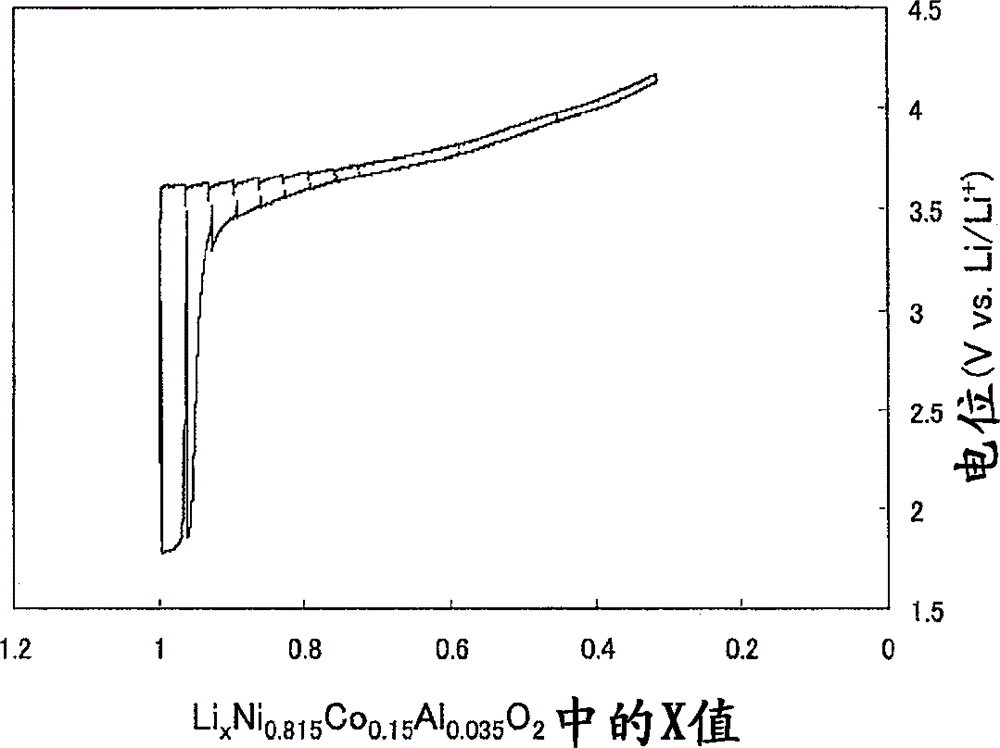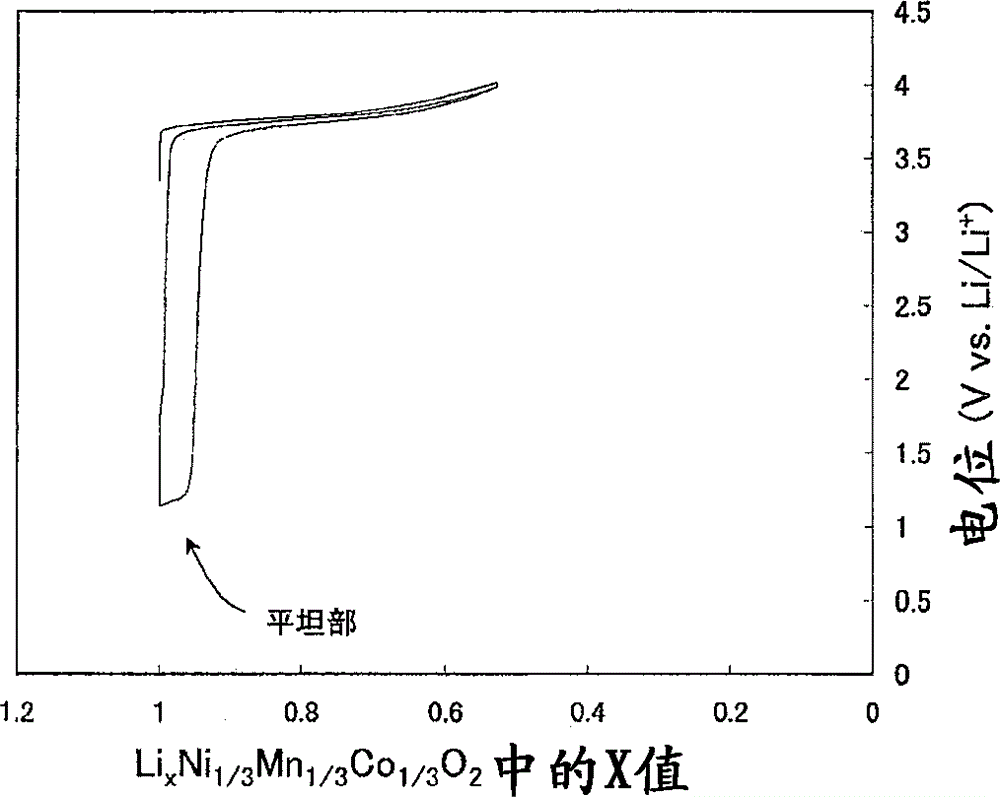Method for charging/discharging positive electrode active material in a lithium secondary battery, charging/discharging system provided with lithium secondary battery and vehicle, electronic device, battery module, battery pack
一种正极活性物质、锂二次电池的技术,应用在二次电池充电/放电、二次电池、二次电池制造等方向,达到高容量、高充放电可逆性的效果
- Summary
- Abstract
- Description
- Claims
- Application Information
AI Technical Summary
Problems solved by technology
Method used
Image
Examples
no. 1 Embodiment approach
[0056] Next, a first embodiment of the present invention will be described. This embodiment is a charging and discharging method for a positive electrode in a lithium secondary battery. The lithium secondary battery includes: a positive electrode containing a positive electrode active material, a negative electrode containing a negative electrode active material capable of absorbing and releasing lithium, and a battery arranged between the positive electrode and the negative electrode. between the separator, and the non-aqueous electrolyte.
[0057] The positive electrode active material in this embodiment is a nickel-based lithium-containing composite oxide capable of storing and releasing lithium. Examples of nickel-based lithium-containing composite oxides include LiNiO 2 As a base, a material in which part of Ni is replaced by another element selected from Mg, Sc, Y, Mn, Fe, Co, Ni, Cu, Zn, Al, Cr, Pb, Sb, and B.
[0058] In addition, in the present embodiment, the end-o...
Embodiment 1
[0102] The inventors of the present invention studied the relationship between the discharge termination potential of the positive electrode active material and the charge-discharge reversibility during charge-discharge, produced a single cell for evaluation, and conducted an evaluation test. Hereinafter, the method and results will be described.
[0103] (1-1) Production of positive electrode active materials A, B, and C
[0104] As the positive electrode active material, three kinds of nickel-based lithium-containing composite oxides with different compositions are produced, that is, the composition is based on LiNi 0.815 co 0.15 Al 0.035 o 2 The positive electrode active material A represented by LiNi 0.76 co 0.14 Al 0.10 o 2 The positive active material B represented by , and the composition is represented by LiNi 1 / 3 mn 1 / 3 co 1 / 3 o 2 Represented positive active material C.
[0105] The preparation method of the positive electrode active material A will be des...
no. 2 Embodiment approach
[0182] Next, a second embodiment of the present invention will be described with reference to the drawings. This embodiment is a charging and discharging method using a wound lithium secondary battery.
[0183] First, the structure of the lithium secondary battery in this embodiment will be described.
[0184] Figure 5 It is a schematic cross-sectional view of an example of the lithium secondary battery in this embodiment.
[0185] The lithium secondary battery includes a battery case 1 , an electrode group 4 housed in the battery case 1 , and insulating rings 8 arranged above and below the electrode group 4 . There is an opening above the battery case 1 , and the opening is sealed by a sealing plate 2 .
[0186] The electrode group 4 has a structure in which the positive electrode 5 and the negative electrode 6 are spirally wound multiple times with the separator 7 interposed therebetween. A positive electrode lead 5 a made of, for example, aluminum is drawn out from the...
PUM
| Property | Measurement | Unit |
|---|---|---|
| current density | aaaaa | aaaaa |
Abstract
Description
Claims
Application Information
 Login to View More
Login to View More - R&D
- Intellectual Property
- Life Sciences
- Materials
- Tech Scout
- Unparalleled Data Quality
- Higher Quality Content
- 60% Fewer Hallucinations
Browse by: Latest US Patents, China's latest patents, Technical Efficacy Thesaurus, Application Domain, Technology Topic, Popular Technical Reports.
© 2025 PatSnap. All rights reserved.Legal|Privacy policy|Modern Slavery Act Transparency Statement|Sitemap|About US| Contact US: help@patsnap.com



